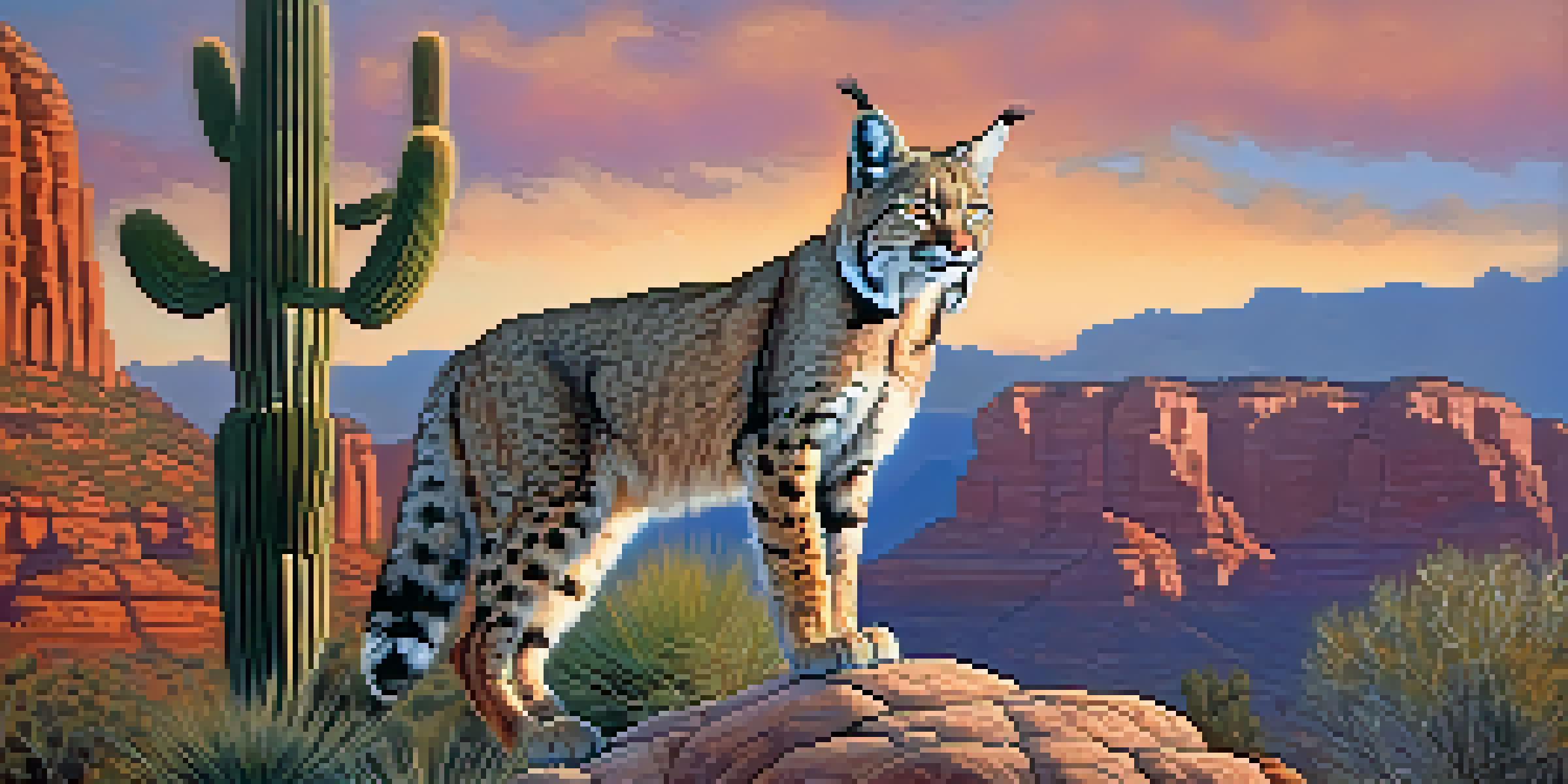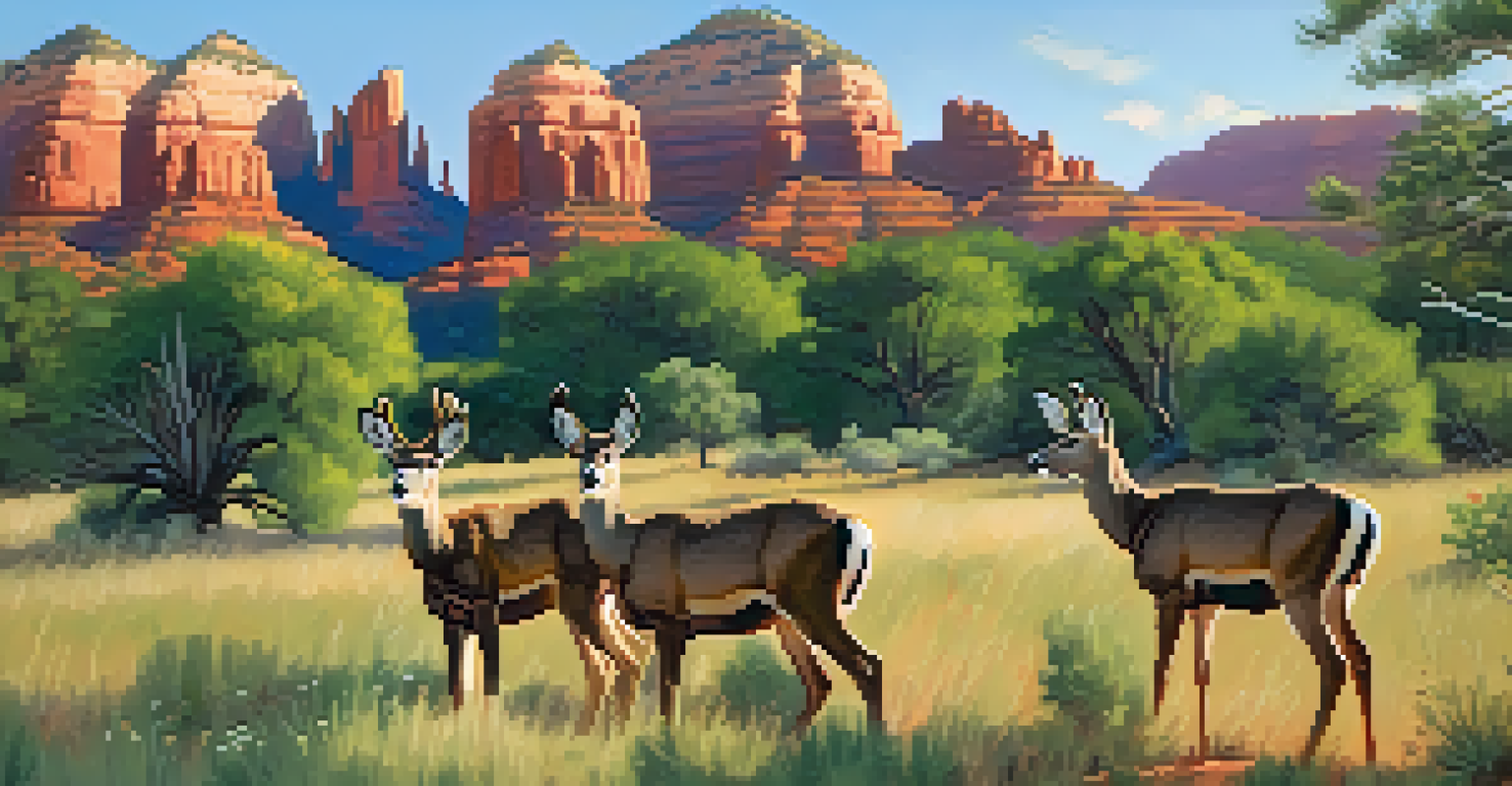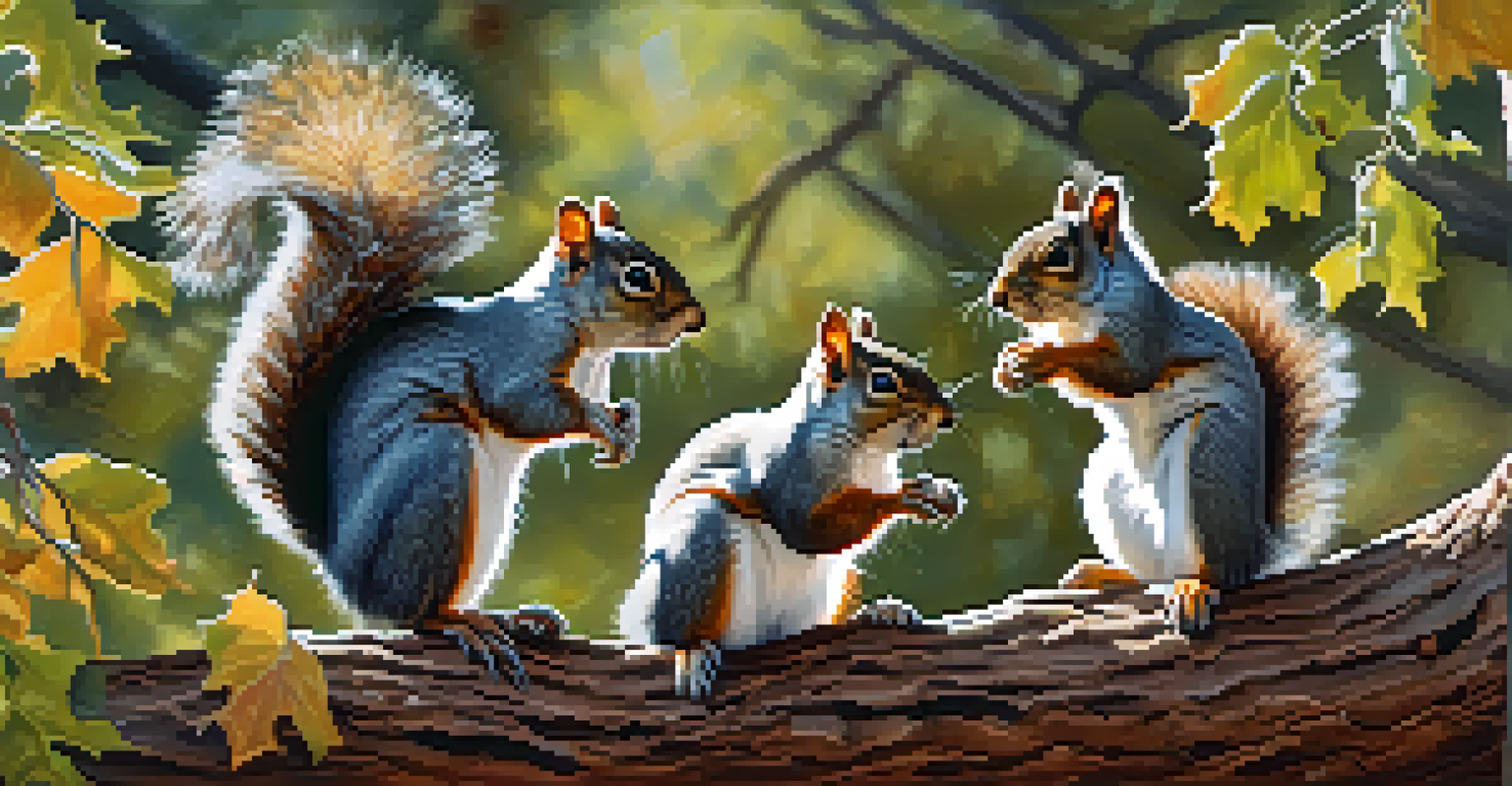Top 10 Mammals Found in Sedona's Rich Biodiversity

Exploring Sedona's Unique Ecosystem
Sedona, Arizona, is renowned for its stunning red rock formations and vibrant landscapes, but it's also a treasure trove of biodiversity. The region's climate and varied terrain create a habitat for a wide array of wildlife, including many fascinating mammals. This article delves into the top ten mammals you might encounter while exploring Sedona's rich ecosystem.
The clearest way into the Universe is through a forest wilderness.
From the majestic mountains to the lush valleys, Sedona offers a unique blend of habitats. These environments support a diverse range of species, making it a hotspot for wildlife enthusiasts. Whether you're hiking the trails or simply enjoying the scenery, you're bound to spot some of these remarkable mammals in their natural habitat.
Understanding the mammals of Sedona not only enriches your experience but also highlights the importance of conservation. Each species plays a vital role in maintaining the ecological balance, and recognizing their presence fosters a deeper appreciation for the natural world.
1. Mule Deer: The Graceful Grazers
One of the most commonly spotted mammals in Sedona is the mule deer, recognizable by their large ears and distinctive forked antlers in males. These graceful grazers are often seen in the early morning or late evening, foraging for grasses, shrubs, and leaves. Their adaptability to various habitats makes them a familiar sight in the region.

Mule deer are not just beautiful; they also play a crucial role in the ecosystem. By feeding on vegetation, they help maintain plant diversity and provide food for predators like mountain lions and coyotes. Observing these animals in the wild can be a serene experience, as they gracefully navigate their surroundings.
Sedona's Biodiversity is Remarkable
Sedona is home to a diverse range of mammals, each playing a crucial role in maintaining the region's ecological balance.
To catch a glimpse of mule deer, consider exploring the Oak Creek Canyon area, where they frequently roam. Remember to keep a respectful distance, as these shy creatures are easily startled. Their presence is a reminder of the delicate balance of life in Sedona's wilderness.
2. Bobcats: The Elusive Predators
Bobcats are another fascinating mammal that call Sedona home. With their tufted ears and short tails, these elusive predators are masters of stealth, often blending seamlessly into their surroundings. While they are typically solitary animals, bobcats play a critical role in controlling the populations of small mammals and birds.
In every walk with nature, one receives far more than he seeks.
These agile hunters are most active during dawn and dusk, making encounters rare but thrilling. Their adaptability allows them to thrive in various habitats, from forests to deserts. If you're lucky, you might spot one lounging in the shade or stealthily stalking its prey.
To increase your chances of encountering a bobcat, consider taking a guided wildlife tour or exploring less-traveled trails. Their secretive nature adds an element of mystery to your Sedona adventure, reminding us of the wildness that still exists in our world.
3. Coyotes: The Clever Survivors
Coyotes are perhaps one of the most adaptable mammals in Sedona, known for their intelligence and resilience. Often mistaken for domestic dogs, these clever survivors thrive in various environments, from urban areas to remote wilderness. Their primary diet consists of small mammals, birds, and fruits, showcasing their versatility as omnivores.
You can often hear their iconic howls during the night, creating a haunting yet beautiful soundtrack to Sedona’s evenings. Their social behavior includes forming packs, which helps them in hunting and raising their young. Observing coyotes in their natural habitat can provide insight into their complex social structures.
Wildlife Encounters Enhance Experiences
Observing Sedona's unique mammals, like mule deer and bobcats, enriches outdoor adventures and fosters a connection to nature.
To spot coyotes, keep an eye out during twilight hours when they're most active. Their presence adds a dynamic element to the Sedona landscape, reminding us of the wild spirit that thrives in this unique environment.
4. Javelinas: The Peculiar Peccaries
Javelinas, also known as collared peccaries, are intriguing mammals that are often seen in Sedona's more arid regions. With their distinctive bristly coats and pig-like appearance, these social animals travel in groups, foraging for roots, fruits, and other vegetation. Their unique behavior and social structures make them a captivating sight.
Unlike wild boars, javelinas are not true pigs but belong to a different family. They communicate through a variety of sounds, including grunts and squeals, creating a lively atmosphere when they’re on the move. Observing a herd of javelinas can be an entertaining experience, as they interact and forage together.
To increase your chances of spotting javelinas, head to areas with dense vegetation, especially during the early morning or late afternoon. These quirky animals are a true representation of Sedona's diverse wildlife.
5. Arizona Gray Squirrel: The Tree-Dwelling Acrobats
The Arizona gray squirrel is a common sight in Sedona's forests, known for its nimble movements and playful nature. These tree-dwelling mammals are excellent climbers, often seen scurrying along branches or leaping from tree to tree in search of food. Their diet primarily consists of nuts, seeds, and fruits, making them an essential part of the ecosystem.
Gray squirrels are particularly active during the day, providing ample opportunities for observation. Their bushy tails not only help with balance but also serve as a communication tool, signaling their mood and intentions to others. Watching these acrobatic creatures can add a delightful touch to your outdoor adventures.
Conservation is Key for Future Generations
Protecting the habitats of Sedona's wildlife is essential for ensuring that future visitors can experience the same breathtaking encounters.
To spot Arizona gray squirrels, look for them in oak and pine trees, especially during the spring and summer months when they are most active. Their playful antics and energetic personalities are sure to bring a smile to any nature lover's face.
6. Ringtail: The Nighttime Nomads
The ringtail, often referred to as a 'ringtail cat,' is a nocturnal mammal that can be found in the rocky areas of Sedona. With its long, bushy tail adorned with distinctive rings, this elusive creature is more closely related to raccoons than cats. Ringtails are adept climbers and are most active at night, making them a true hidden gem of Sedona's wildlife.
These small mammals primarily feed on insects, small rodents, and fruits, showcasing their adaptability. Their solitary nature and nocturnal habits can make spotting them a challenge, offering an exciting opportunity for night owls and wildlife enthusiasts. The thrill of encountering a ringtail in the wild is an unforgettable experience.

To increase your chances of spotting a ringtail, consider participating in a night wildlife tour or exploring rocky areas after dark. Remember to respect their space and enjoy the wonder of witnessing one of Sedona's unique nocturnal residents.
7. Bats: The Skyward Inhabitants
Bats are often overlooked, yet they play a vital role in Sedona's ecosystem as pollinators and pest controllers. With over 1,400 species worldwide, Sedona is home to several types of bats, each contributing to the balance of nature. These fascinating mammals are primarily nocturnal and can consume thousands of insects in a single night, showcasing their importance for natural pest control.
While you may not see them during the day, the sight of bats emerging at dusk is a remarkable spectacle. Their agile flight patterns and echolocation abilities make them skilled hunters in the night sky. Bats are often misunderstood creatures, but they are essential for maintaining healthy ecosystems.
To learn more about bats, consider visiting local caves or participating in guided tours that focus on these nocturnal mammals. Understanding their role in the ecosystem can help foster a greater appreciation for these remarkable creatures.
8. Conclusion: Celebrating Sedona's Mammalian Diversity
Sedona's rich biodiversity is a testament to the beauty and complexity of nature. From the graceful mule deer to the elusive ringtail, each mammal contributes to the vibrant tapestry of life in this stunning region. By taking the time to observe and appreciate these creatures, we can foster a deeper connection to the environment.
As you explore Sedona, keep an eye out for these remarkable mammals, and remember the importance of conservation efforts. Protecting their habitats ensures that future generations can enjoy the same breathtaking experiences you have. Every encounter with wildlife is a reminder of the delicate balance that sustains life in Sedona.
In celebrating Sedona's diverse mammalian population, we not only appreciate their beauty but also recognize our responsibility to protect their habitats. Let your adventures in Sedona inspire a greater love for wildlife and the incredible ecosystems that support them.